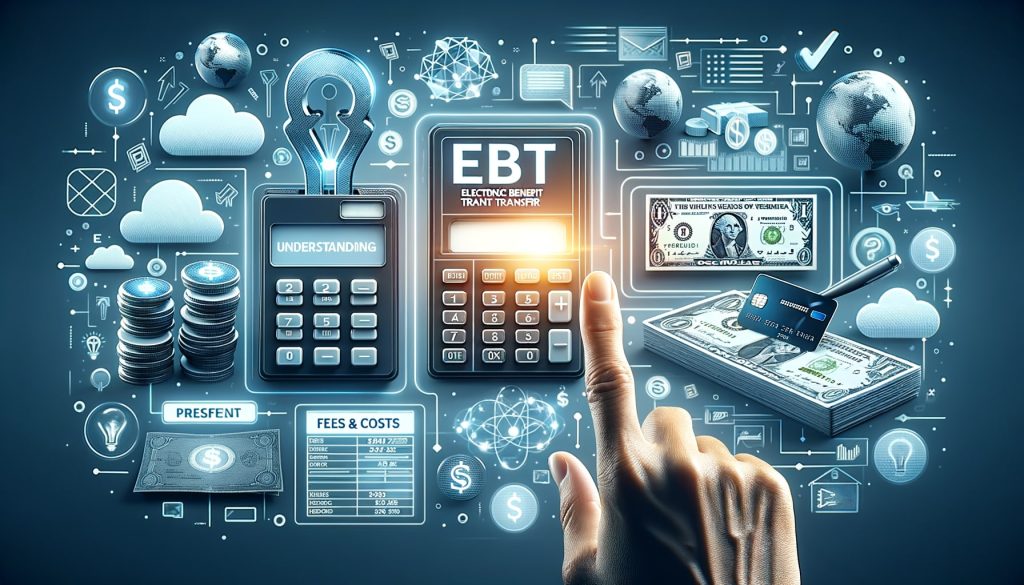
By Ethan Brooks November 22, 2024
Electronic Benefit Transfer (EBT) payment processing is a system that allows eligible individuals to access government benefits, such as Supplemental Nutrition Assistance Program (SNAP) benefits, through a card-based payment method. This method replaces the traditional paper-based food stamp system, providing a more efficient and secure way for recipients to access their benefits.
In this comprehensive guide, we will explore the benefits of transitioning to EBT payment processing, provide a step-by-step guide to setting it up for your business, discuss factors to consider when choosing an EBT payment processor, explain the fees and costs associated with EBT payment processing, highlight the regulations and requirements for compliance, discuss integrating EBT payment processing into your point of sale (POS) system, provide best practices for maximizing security, troubleshoot common issues, and address frequently asked questions.
Maximizing the Benefits of EBT Payment Processing for Your Business

Transitioning to EBT payment processing can offer several benefits for your business. Firstly, it allows you to tap into a new customer base of individuals and families who rely on government assistance programs. By accepting EBT payments, you can attract these customers and increase your sales.
EBT payment processing also streamlines your payment operations. Unlike traditional paper-based methods, EBT transactions are processed electronically, reducing the need for manual handling and paperwork. This can save you time and resources, allowing you to focus on other aspects of your business.
Furthermore, EBT payment processing can enhance the overall customer experience. Many individuals who receive government benefits prefer the convenience and privacy of using EBT cards instead of physical vouchers or checks. By offering EBT payments, you can provide a more seamless and dignified shopping experience for these customers.
Setting Up Your Business for EBT Payment Processing

Once you have chosen an EBT payment processor, the next step is to set up your business for EBT payment processing. This involves obtaining the necessary approvals and equipment to accept EBT payments. The specific requirements may vary depending on your location and the type of business you operate.
To get started, you will need to contact the state agency responsible for EBT in your area. They will provide you with the necessary application forms and guide you through the process. You may be required to provide documentation such as your business license, tax identification number, and proof of compliance with health and safety regulations.
In terms of equipment, you will need a POS system that is capable of processing EBT transactions. This typically involves installing a card reader or PIN pad that can handle EBT cards. Your EBT payment processor can assist you in selecting the appropriate hardware and software for your business.
Choosing the Right EBT Payment Processor: Factors to Consider

When choosing an EBT payment processor, there are several factors to consider. First and foremost, you should ensure that the processor is approved by the relevant government agency, such as the United States Department of Agriculture (USDA) for SNAP benefits. It is also important to consider the processor’s reputation, reliability, and customer support. Look for processors that have experience in EBT payment processing and have a track record of providing excellent service to their clients.
Additionally, you should consider the fees and costs associated with EBT payment processing. Different processors may have different fee structures, including transaction fees, monthly fees, and equipment costs. It is important to carefully review these fees and compare them with other processors to ensure that you are getting the best value for your business.
Understanding EBT Payment Processing Fees and Costs

EBT payment processing fees and costs can vary depending on the processor and the specific services offered. Common fees include transaction fees, which are charged for each EBT transaction processed, and monthly fees, which cover the cost of maintaining the EBT merchant account. Some processors may also charge equipment fees for the purchase or rental of POS terminals or card readers.
It is important to carefully review the fee structure of each processor and consider the volume of EBT transactions your business expects to process. Some processors may offer volume discounts or lower fees for businesses with higher transaction volumes. Additionally, be aware of any hidden fees or additional charges that may be associated with EBT payment processing.
Ensuring Compliance and Security in EBT Payment Processing
Compliance and security are paramount when it comes to EBT payment processing. As a business accepting EBT payments, you must adhere to the regulations set forth by the state agency and the EBT payment processor. Failure to comply can result in penalties, fines, or even the suspension of your ability to accept EBT payments.
To ensure compliance, it is important to stay up to date with any changes in regulations and requirements. This may involve attending training sessions or webinars provided by the state agency or the EBT payment processor. It is also crucial to maintain accurate records of EBT transactions and keep them securely stored for auditing purposes.
In terms of security, EBT payment processors employ various measures to protect sensitive information. This includes encryption of data during transmission and storage, as well as strict access controls. As a business, you should also implement best practices such as regularly updating your POS system and training your staff on how to handle EBT transactions securely.
Integrating EBT Payment Processing into Your Point of Sale (POS) System
Integrating EBT payment processing into your POS system is essential for a seamless and efficient payment process. Many EBT payment processors offer integration options that allow your POS system to communicate directly with the processor’s system, eliminating the need for manual entry of EBT transactions.
To integrate EBT payment processing into your POS system, you will need to ensure that your POS software is compatible with the processor’s system. This may involve installing software updates or working with your POS provider to configure the integration. Once the integration is complete, your staff will be able to process EBT transactions directly through your POS system, simplifying the payment process and reducing the potential for errors.
Maximizing Security: Best Practices for EBT Payment Processing
Security is a critical aspect of EBT payment processing. To maximize security, it is important to follow best practices and implement measures to protect sensitive information. One key practice is to ensure that your POS system and EBT payment processor are Payment Card Industry Data Security Standard (PCI DSS) compliant. PCI DSS is a set of security standards designed to protect cardholder data and prevent fraud.
Additionally, it is important to train your staff on security best practices, such as not storing EBT card information, regularly updating passwords, and being vigilant for signs of fraud or suspicious activity. Implementing strong access controls, such as requiring unique user IDs and passwords for each staff member, can also help prevent unauthorized access to sensitive information.
Troubleshooting Common Issues in EBT Payment Processing
While EBT payment processing is generally reliable, there may be occasional issues that arise. Common issues include declined transactions, connectivity problems, and equipment malfunctions. When troubleshooting these issues, it is important to first check for simple solutions, such as ensuring that the EBT card is inserted correctly or that the equipment is properly connected.
If simple solutions do not resolve the issue, it may be necessary to contact your EBT payment processor’s customer support for assistance. They can help diagnose and resolve the issue, whether it is related to the processor’s system, the equipment, or the connectivity.
Overcoming Challenges in Transitioning to EBT Payment Processing
While there are numerous benefits to transitioning to EBT payment processing, there can also be challenges along the way. One common challenge is the initial investment required to set up the necessary equipment and software. However, many EBT payment processors offer flexible pricing options and financing plans to help businesses manage these costs.
Another challenge is ensuring that your staff is properly trained on how to process EBT transactions. It is important to provide comprehensive training and ongoing support to ensure that your employees are confident and knowledgeable in handling EBT payments. This can help prevent errors and ensure a positive customer experience.
Additionally, businesses may face technical issues or disruptions in EBT payment processing. It is crucial to have a contingency plan in place to minimize any potential downtime or disruptions to your operations. This may involve having backup equipment or alternative payment methods available.
Frequently Asked Questions (FAQs)
Q: What is EBT payment processing?
EBT payment processing is a system that allows eligible individuals to access government benefits through a card-based payment method.
Q: What are the benefits of transitioning to EBT payment processing?
Transitioning to EBT payment processing offers benefits such as streamlining the payment process, reducing the risk of fraud, and increasing efficiency for businesses. For recipients, it offers increased convenience and dignity.
Q: How do I set up EBT payment processing for my business?
To set up EBT payment processing, you need to determine your eligibility, apply for an EBT merchant account, receive the necessary equipment, and train your staff on how to process EBT payments.
Q: What factors should I consider when choosing an EBT payment processor?
Factors to consider when choosing an EBT payment processor include their approval by relevant government agencies, reputation, reliability, customer support, and fees.
Q: What fees and costs are associated with EBT payment processing?
EBT payment processing fees can include transaction fees, monthly fees, and equipment costs. It is important to carefully review the fee structure of each processor and consider the volume of transactions your business expects to process.
Conclusion
Transitioning to EBT payment processing offers numerous benefits for businesses and recipients alike. It streamlines the payment process, increases efficiency, and reduces the risk of fraud. By following the step-by-step guide, choosing the right EBT payment processor, understanding the fees and costs, ensuring compliance, integrating EBT payment processing into your POS system, maximizing security, and troubleshooting common issues, you can successfully transition to EBT payment processing and provide a more convenient and dignified experience for recipients.